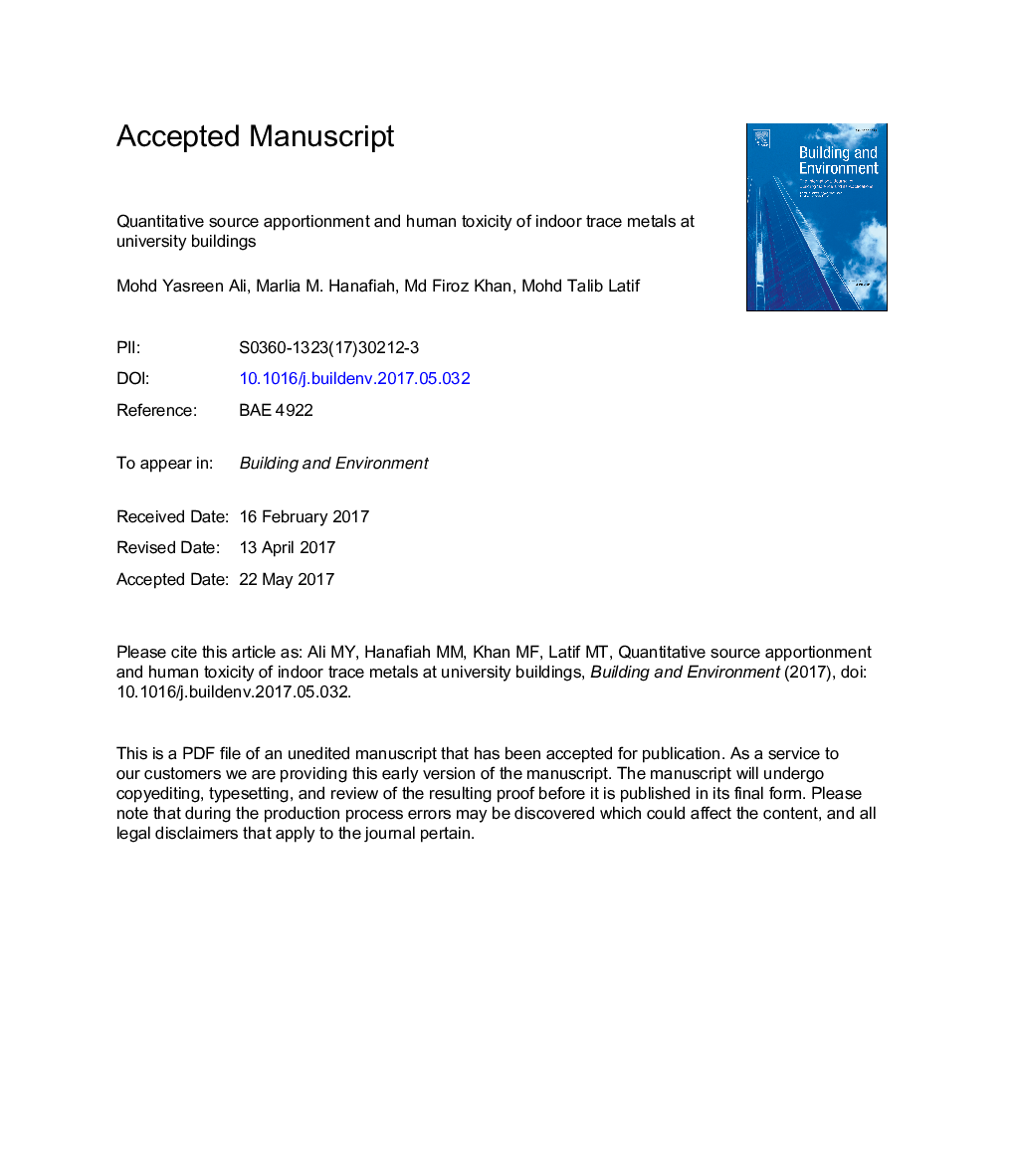| Article ID | Journal | Published Year | Pages | File Type |
|---|---|---|---|---|
| 4911516 | Building and Environment | 2017 | 24 Pages |
Abstract
This study focuses on the source apportionment principal component analysis of indoor particulate matter (PM10) composition in two university buildings with different ventilation systems. A low volume sampler using Teflon filter paper was used to collect the PM10 samples and inductively coupled plasma mass spectrometry was used to determine the concentration of heavy metals. The potential human health damage due to the inhalation of carcinogenic and non-carcinogenic elements was also determined based on the USEPA standard. The results showed PM10 concentrations recorded in Building 1 and Building 2 ranged between 19.1 and 237 μg mâ3 and 23.4-159 μg mâ3, respectively. In Building 1, the principal component analysis (PCA) and multiple linear regression (MLR) showed that the main sources of pollutants in PM10 were the crustal source (20%), indoor-induced (8%), urban origin (7%) and the Earth's crust (6%). The main sources of pollutants in Building 2 were combustion (21%), biogenic (6%), anthropogenic (4%) and crustal (3%). The effective lifetime carcinogenic risks (ELCR) in Buildings 1 and 2 were 1.90E-3 and 1.65E-4, respectively. The hazard quotient (HQ) represents the non-carcinogenic risk, with 7.73 and 6.46 in Building 1 and Building 2, respectively. These ECLR and HQ values exceed the acceptable limit and are higher compared to the standard from the United States Environmental Protection Agency's Guidelines for the assessment of carcinogen risk. It was suggested that different types of ventilation influence the PM10 distribution in buildings and associated risks towards the occupant's health and indoor air quality.
Related Topics
Physical Sciences and Engineering
Energy
Renewable Energy, Sustainability and the Environment
Authors
Mohd Yasreen Ali, Marlia M. Hanafiah, Md Firoz Khan, Mohd Talib Latif,
